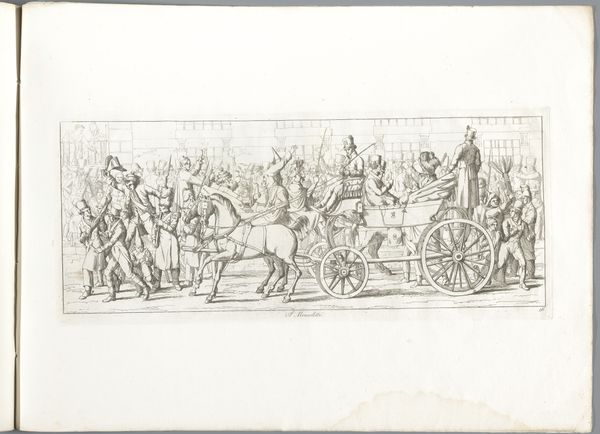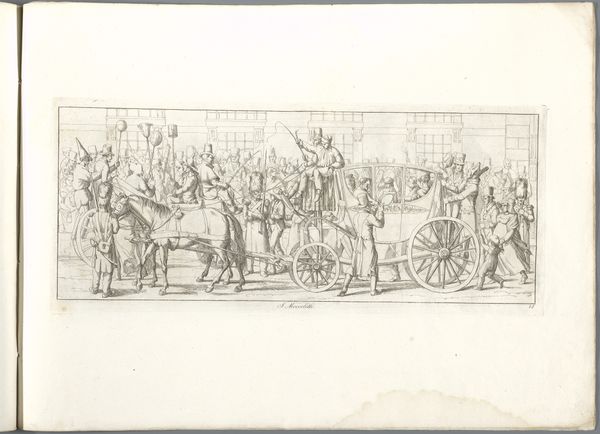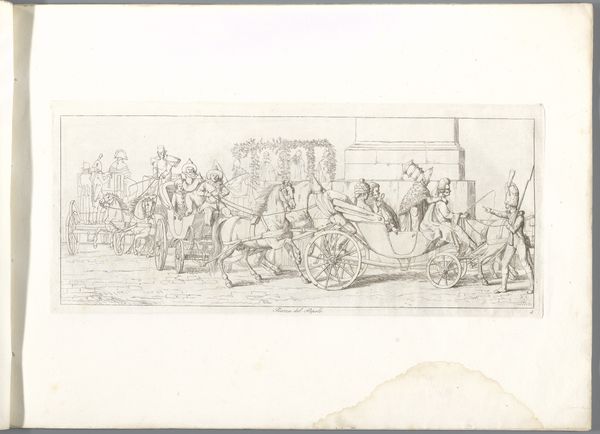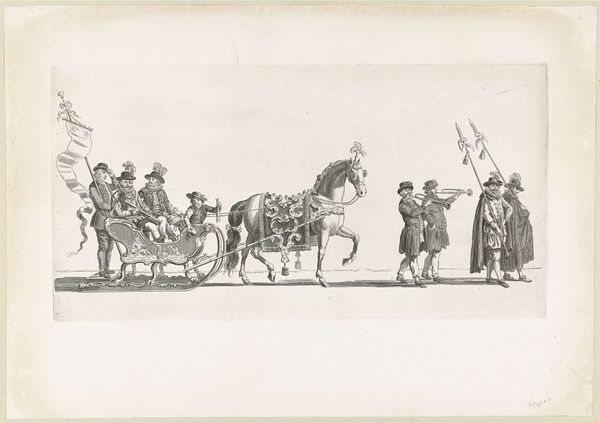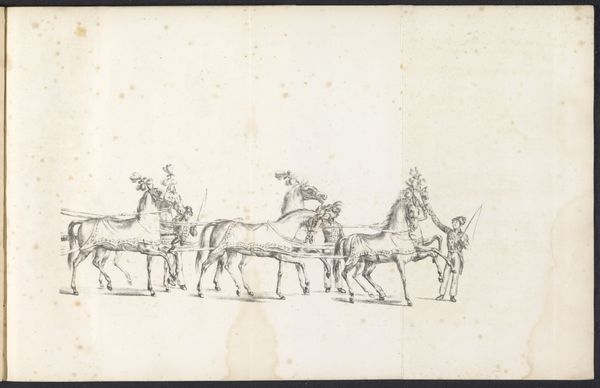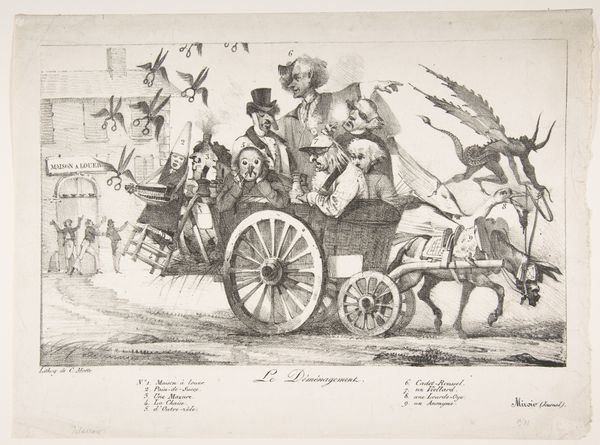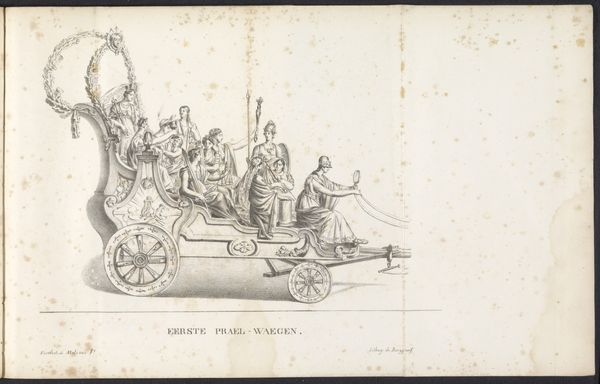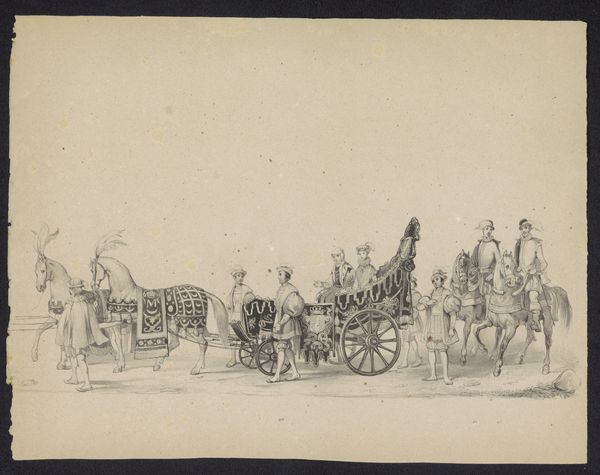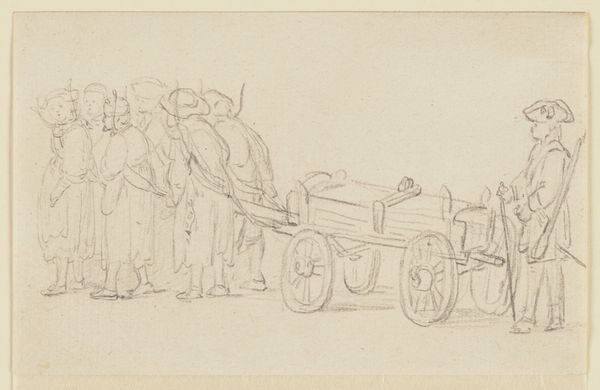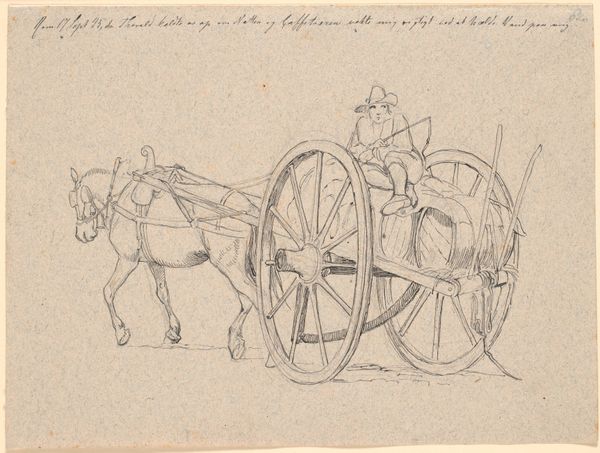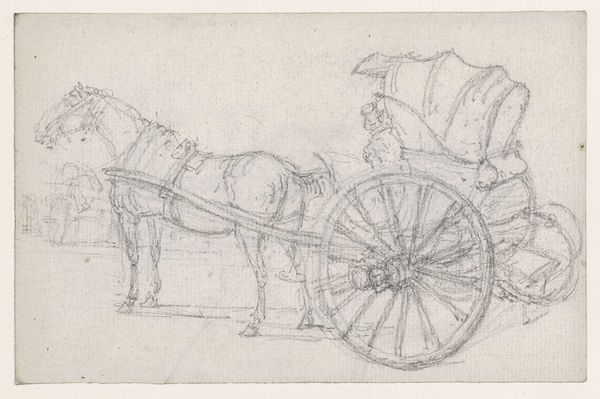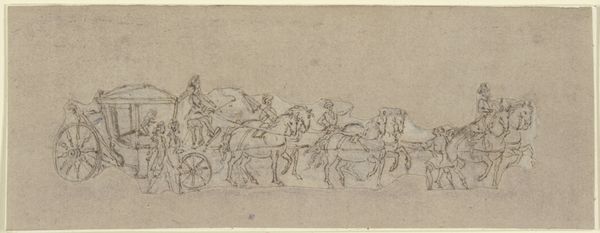
drawing, ink, pen
#
drawing
#
ink drawing
#
pen sketch
#
landscape
#
ink
#
romanticism
#
pen
#
genre-painting
#
realism
Dimensions: height 205 mm, width 475 mm, height 413 mm, width 568 mm
Copyright: Rijks Museum: Open Domain
Curator: Here we have "Kaarsenspel" or "Candle Game", an ink and pen drawing created around 1820 by Carl Gustaf Hjalmar Mörner. Editor: What a perfectly peculiar little scene. The whole procession has this rather dreamlike, almost whimsical feel to it, as though it's lit by candlelight flickering just behind the paper itself. Curator: The technique itself is quite fascinating. Look at how Mörner uses varied line weights and cross-hatching to give depth to a genre scene rendered entirely in pen and ink. The clear realism betrays its time and roots in romanticism. Notice how he’s depicted the labor of transportation: the carriage itself, the harnessed horses, the individual physically pulling it. Editor: Absolutely, it highlights this odd tension of grandeur versus the grind, right? Almost satirical, though gently so. It makes me wonder what exactly *is* the candle game of the title? Perhaps it's this whole performance itself—the high society carriage display balanced precariously between the laborers! Curator: Interesting thought! We could explore the socio-economic conditions of the era through it. This era saw sharp class divisions—and art served as a marker of wealth, with wealthy landowners consuming art depicting landscapes, portraiture, and social events. Editor: True. It is curious, though, how restrained the artist's emotion seems. Usually, Romanticism would ooze drama, yet it seems strangely hushed here. All this grandeur is underpinned by a feeling of melancholy… or maybe I'm projecting. Curator: It is important not to romanticize art history too! Look, how he's detailed every strap and wheel speaks to an interest in technological innovation happening at that time and place. Perhaps, instead of a lament, this image reflects this early modern period's complex relationship to machines as instruments of labor AND symbols of high social status. Editor: Still, there’s a strangeness, don't you think? An eerie kind of grace beneath all the meticulous craft? Curator: The beauty here definitely emerges in his ability to portray the nuances of this society. This tiny slice of a world is long gone, and seeing how closely Mörner was watching and documenting is really insightful! Editor: Well said! It is indeed quite haunting, how it manages to feel so real and removed at the same time. It feels intimate almost like a little daydream captured with extraordinary skill.
Comments
No comments
Be the first to comment and join the conversation on the ultimate creative platform.
